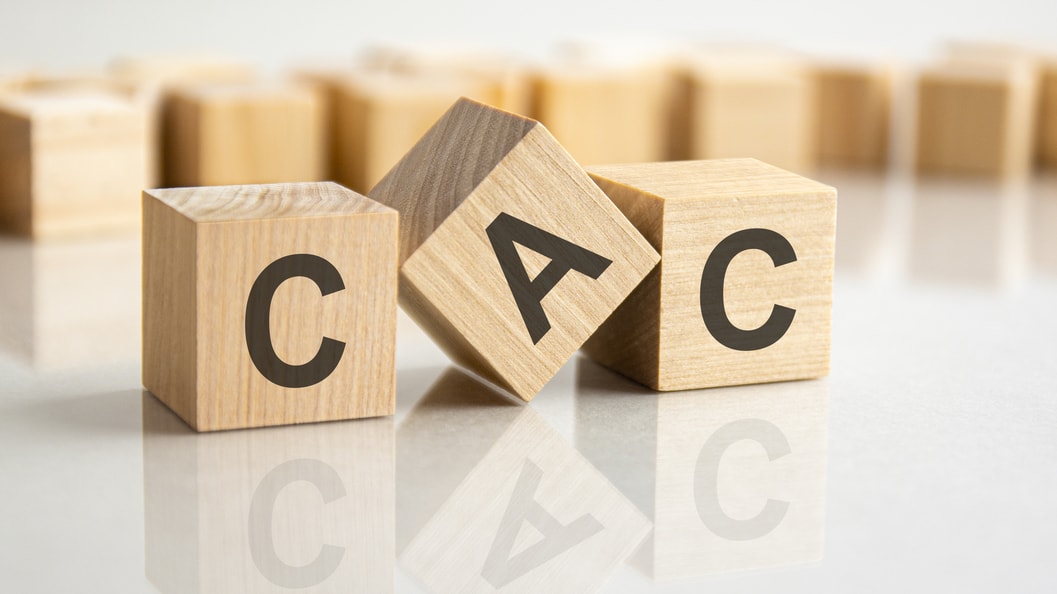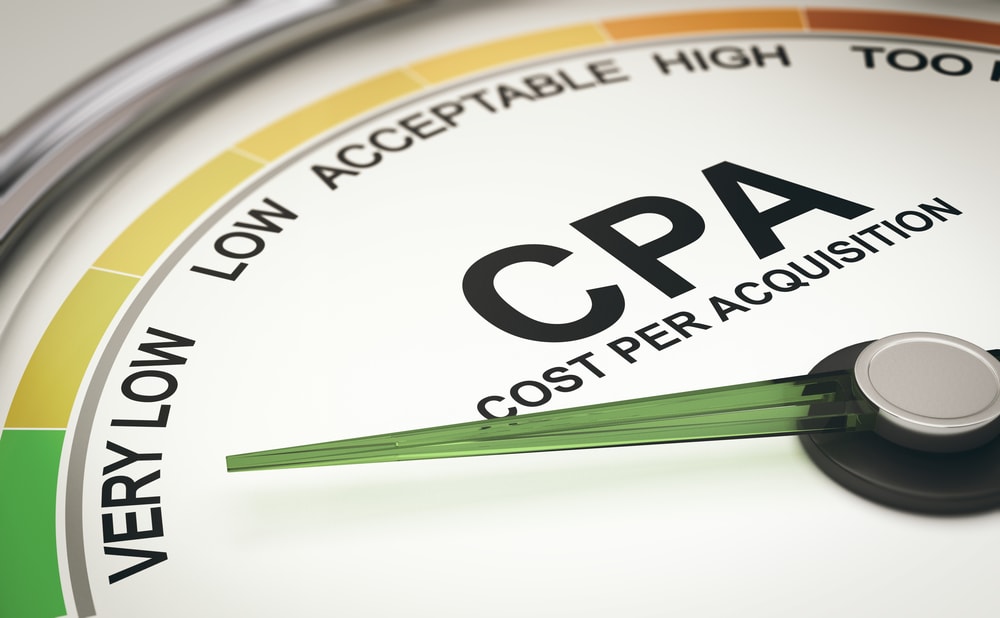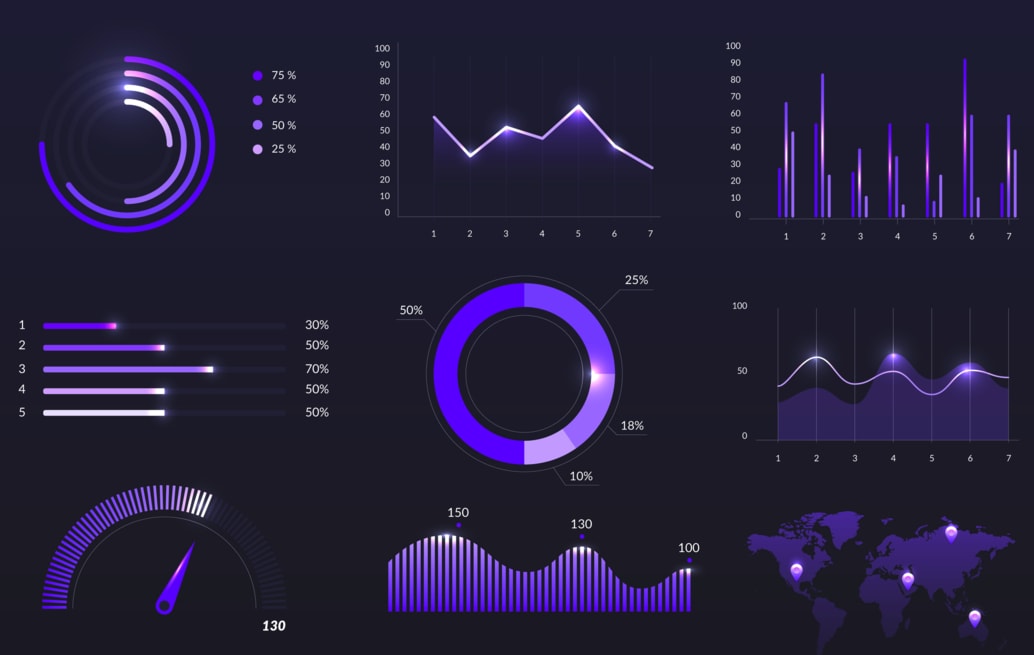You can think of CAC and CPA as two sides to the same coin, as they both focus on the users’ willingness to pay money. It’s especially important in e-commerce, where a potential customer will make an order only if they think the product is worthy of their money.
CAC and CPA are a big part of the business model of every business. Except for very small-scale operations, companies need a way to measure the costs of acquiring a new paying customer. CAC and CPA are two different types of ratios used to calculate the costs of acquiring customers, in which the customer lifetime value plays a huge role.
With proper use of these numbers, a business can compare their results with their competitors and ensure that they are getting the best possible return on their investments.
That’s why, in this article, we’ll be explaining everything you should know about the CAC and CPA and how they differ.
What is CAC?
CAC is the Customer Acquisition Cost. It is the money a business spends to acquire a customer, and it measures the financial burden of acquiring a customer.
CAC stands for Customer Acquisition Cost, and it is calculated by dividing the total marketing expenditures by the number of customers acquired. These numbers are also known as Customer Acquisition Cost per Conversion Rate.
In simplest terms, CAC is the cost of finding a new paying user. And the average customer acquisition cost is defined as the average cost of acquiring a new customer in the first year.
It is important to note that CAC may vary from one kind to another. The most accurate way to measure it is by calculating the costs based on customer acquisition goals set by the business. Like most cost calculations, CAC is also a moving target. It usually increases every time the company acquires new customers.
With the help of CAC, a business can compare their results to that of their competitors to see if they are getting a possible return on their investment. Many times, businesses also use CAC to measure short-term results.
What Are The Key Components of CAC?
So, now that we know what CAC is, let’s look at the key components that make up CAC.
Advertising costs.
The first thing to consider when calculating CAC is the marketing expenses and marketing costs. These costs include the cost of print advertisements, radio, TV, and Internet like google ads or any other type of paid marketing. These costs can also include the cost of “search engine optimization” or SEO. The actual calculation of CAC depends on how much money the company is willing to spend on advertising and the kind of reach they are willing to pay for.
Cost of your marketing team.
Another thing that’s important to remember is the cost of your marketing team. This is mostly based on the number of people employed for developing, creating, and running advertising campaigns. This can also include the cost of public relations, operations, and planning.
Direct sales costs.
CAC in direct sales is all about the amount it takes to acquire customers who happen to be directly involved with your business. Sales expenses like commissions, the salary of the sales team, and utilities can be included in CAC.
For example, at a coffee shop, you would include:
- Your barista salaries.
- Payments for special coffee/tea blends.
- Employee wages are related to other tasks that are associated with your business.
Technical costs.
Technical costs relate to the cost of technology used for your business other than the marketing campaigns. These costs include website development, computer equipment, software, and other services that help you communicate with people.
Production costs.
Production costs include all the money you spend on materials that are used in your business. These costs include shipping, postage, packaging materials, and other expenses that need to be paid to produce your product.
Do you want to minimize your CAC and CPA?
Why is Understanding Your CAC Important?
As we saw above, the key components of your CAC will depend on your business model and the type of marketing you use.
For example, if you sell products directly to consumers via the Internet, then any CAC impact from direct selling costs won’t occur. On the other hand, if you sell large amounts of your products through a retail store, then sales personnel-related expenses will be included in calculating your CAC.
Knowing your business model will also help you understand how to adjust your marketing strategies depending on your CAC. For example, if you are running a high-end business selling luxury cars, your CAC is $5,000. You should probably focus on acquiring potential customers who can purchase such a car rather than reaching out to people who don’t have the money to pay for such an item.
Another thing to remember is that the CAC of a business will not go down in the future as your costs are fixed. On the other hand, if you ever decide to increase your expenses and decrease your revenue, then this will also impact your CAC. Your customer success teams should continuously monitor your business’s CAC and make ongoing adjustments to achieve maximum ROI.
Many businesses will look at their direct selling revenues to indicate how well they are doing. However, this isn’t a good indicator of their overall financial health in many cases. This is because, in most cases, the first priority for most direct marketers is to grow their business for profit rather than market size since the overhead costs associated with running a growing and successful business are high.
What is CPA?
Cost Per Acquisition CPA is the increment that a business invests in acquiring one consumer’s attention. A company can get something at CPA. For example, with online advertising, a company needs to pay the advertiser on the basis of how many views they are getting.
Due to the fact that most B2B companies are quite small and do not have enough resources to spend on every B2B campaign, every successful B2B customer relationship management campaign must be targeted with a specific set of criteria.
This way, it is expected to have much more success than if you promote your products all over the place without actually having made any effort to target your customers.
What Are The Key Components of CPA?
Now that we have learned what CPA is, let’s go over all the components that make up CPA:
Clear target group
To be successful, you need to target your market (customers) clearly. You need to create a set of landing pages that are appropriate for the online traffic you want to get. It is important that these pages should be based on the campaigns, and each landing page must have a particular message in mind.
Good content
Your landing page should include content that is relevant to your target market. It should be attractive, informative and it must attract the interest of the viewers. Your idea must be original, and you need to make sure that your landing page contains all the features and information a person would want to know about your product or service. For example, if you want to sell a software package, you must make sure of the content on your landing page.
Advertising budget
The last component that defines the success of a CPA campaign is the money spent on the ads. The more money you spend on advertising, the greater will be your chances of getting leads to convert into sales.
Appropriate price.
You need to make sure that your CPA is set at an affordable price for your targeted market. Any advertiser will tell you that pricing plays an important role in setting itself apart from its competitors and getting customers.
Timely payment
A CPA campaign needs to be paid early to recover the amount of money used for advertising. You need to spend money on advertising and make sure that you get paid fairly for your efforts.
There are many B2B companies out there that have a higher profit than their competitors, even though they spend much less on marketing and advertising than their competitors.
Dedicated staff
A CPA campaign requires a dedicated team of people who can manage the efforts and be responsible for all the aspects of it. Your company needs to dedicate enough resources to make your CPA campaign successful. You should also consider hiring a specific person responsible for overseeing all such efforts.
Now is the time to optimize your CAC and CPA.
Why is Understanding Your CPA Important?
There are several reasons why it is important to understand your CPA:
Taking the customer journey to its logical conclusion when considering the full life cycle.
Marketers often take a product or service and expect customers to act in certain ways. However, there is no value for that product or service at some point in the customer journey. As a result, there is no longer a need for the marketing spend, which was oriented towards providing the customer with value.
For example, a shoe retailer might have a shoe web landing page. However, it would be unwise to expect the same customer to purchase the same pair of shoes again; there will always be something else they want to buy. Instead, this needs to keep the product or service as relevant in your customer’s mind as possible by year-round promotion.
There is also far more value for your customers if you can make sure that they are not just buying your product or service once but taking it throughout the rest of their lives.
It’s also important to clearly define your customer needs and then use digital technology to make sure that happens by making your product or service as relevant as possible.
How is CAC Different From CPA in Marketing?
While the overall difference between CPA and CAC is the cost involved in the campaigns, there are a lot of other differences between these two costs, such as:
The goal of the campaigns is different.
CPA is meant to generate sales, whereas CAC promotes awareness among consumers. Like CPA, CAC also has a cost associated with it. But in this case, this is the “cost of acquisition” of new customers. It can be the higher price you offer them, or it can be a gift or unlimited introductory offer even though you may need to pay for that later on.
The way the ads are displayed is different.
CPA is meant to display ads in some form that can be viewed by the customers and communicate exactly what they need and what the company provides. CAC is intended to promote awareness of a product or service without displaying any ad that communicates anything about what the company does or what its services are for sale. Ads for CAC are meant to generate awareness but not necessarily influence and convert into actual sales.
The way the data is collected is different.
CPA involves data collection from credit card payments from customers. CAC uses data collected in other ways, e.g., by selling a prepaid card giving that to customers along with a brochure on the company’s products or services.
The way the marketing campaign is managed is different.
A CPA campaign includes all the resources needed to promote and sell its product or service, e.g., advertising placement, fulfillment of orders, and delivery of products or services. A CAC campaign uses similar resources but focuses on generating awareness to convert it into actual sales of their products or services eventually after more time has passed through marketing efforts.
The tactics used during the campaigns are different.
CPA involves creating and running a very short term marketing campaign for promoting a specific product or service to sell it or to convert its customers into purchasing customers on a recurring basis with the use of various tactics such as discount coupons, special offers, and other ways of encouraging them to purchase.
CAC involves stressing only one objective, e.g., generating awareness, without taking any step towards converting that into actual sales of the company’s products or services.
Final Words on CAC vs. CPA (Customer Acquisition Cost vs Cost per Acquisition)
At last, CAC is promoted as a business model different from and complementary to CPA. The two models are the same, except for some minor variations in how they are implemented.
They both promote awareness about their products or services using different tactics for generating awareness and converting it into sales and purchases of products or services by customers.
So, now, you have a complete understanding of the difference between CAC and CPA. Go ahead and use your expertise in running campaigns to win your customers’ trust.
Growth Hackers offers data-driven growth hacking services helping businesses from all over the world grow. There is no fluff with Growth Hackers. We help entrepreneurs and business owners in optimizing their customer acquisition cost and cost per acquisition, driving targeted traffic, generating qualified leads, optimizing their conversion rate gathering and analyzing data analytics, acquiring and retaining users and increasing sales. We go further than brand awareness and exposure. We make sure that the strategies we implement move the needle so your business grow, strive and succeed. If you too want your business to reach new heights, contact Growth Hackers today so we can discuss about your brand and create a custom growth plan for you. You’re just one click away to skyrocket your business.







